Content:
Due to their unusual color and affectionate nature, silver rabbits are highly prized among breeders. They are unpretentious to the conditions of detention and almost never cause problems.
These animals were bred by Soviet breeders in the 50s. This color was obtained by crossing French champagne rabbits and Soviet meat rabbits. Champagne rabbits were imported from India. This breed is now known as the Big Light Silver. Soviet developments carried out selection in the agricultural sector of the Poltava region. In Ukraine, animals are known as Poltava silver. In Russia they use the name Soviet silver.
Signs of silver rabbits:
- The weight of an adult reaches 4.5-5 kg. Sometimes there are larger representatives weighing more than 6 kg.
- The chest is wide, the volume reaches 36 cm.
- Body length 54-58 cm.
- Rabbits have harmonious body proportions.
- Ears are vertical, no more than 13 cm.
- Straight back.
- Well-developed musculature.
- Smooth powerful paws.
- The eyes are light brown.
Fur characteristic
Despite the huge variety of fur shades, the main advantage of this breed is its silver color. It is uneven, the tips of the ears, tail and paws are darker than the body. The guard wool is of a snow-white color, and the fibers of the fluff are blue-blue. The fur is soft and thick. The breed is of high value and continues to gain in popularity.
Silver breed varieties
There are several varieties of silver rabbits: Poltava (Soviet) silver, European silver, Hungarian (blue) rabbit.
Poltava silver differs from the rest by its uneven color. In comparison with the Champagne breed, whose representatives became the progenitors of the silver rabbits, the Poltava resident has a darker color.
The Soviet chinchilla breed is similar to the Poltava gray color of the skin and huge size. They are distinguished by the fact that the color of the Soviet representative has a more uniform character without dark shades on the legs, tail and head.
The Hungarian blue rabbit is a species of the silver breed. Bred in Austria by crossing Flanders and Moravian rabbits. It is smaller than other representatives of the silver breed, but has a similar color.
European silver or large light silver (BSS) has a common ancestor with the rest of the breeds - the champagne rabbit. The characteristics of weight, size, productivity of the breed are the same as those of other silver breeds. The main difference is the lighter tone of the fur.
Rabbits European silver
This variety of silver rabbits was obtained from representatives of the silver champagne breed. After the introduction of these animals to Germany, rabbits became popular as the French Big Silver breed. German breeders were engaged in improving the characteristics of the breed: increasing fertility, weight characteristics, early maturity.
BSS rabbits belong to the meat-skin breed. But in most cases they are grown for the sake of an unusual skin color. The breed is not very common in Russia, but it is very popular in Europe. Animals have fleshiness, thick fur. Have the ability to quickly gain weight.
The BSS rabbit breed has standard characteristics inherent in the breeds of the silver group:
- The body constitution is strong, regular, muscular.
- The body is long up to 55-58 cm.
- Wide chest, straight back.
- The weight of an adult varies from 4.5 to 6.5 kg.
Females are distinguished by good fertility. For one okrol you can get about 8 rabbits. When slaughtered, 61% of the total weight of the meat product is obtained. The meat is tender and juicy, has little fiber and a sufficient amount of fat.
Rabbits Soviet silver
Soviet silver and Poltava silver are one type of breed that has two names. They were registered in 1952 in Poltava. The goal of the breeders was to obtain rabbits with high fertility rates. Rabbits Poltava silver - the description of the breed does not differ from the standard - the rabbit is silver:
- Strong proportional body constitution.
- The length of the muscular straight body reaches 57 cm.
- Strong feet, well proportioned.
- Medium head with straight short ears.
- The back is straight.
A distinctive feature of these rabbits are dark shades of color on the legs, ears, tail and dark circles near the eyes.
Feeding
Rabbits are prone to obesity, so the content of mixed grain mixtures in the diet should be small. The diet should be based on fresh hay. The high content of coarse fiber in hay improves the digestion of animals. It also has a positive effect on uniform grinding of teeth.
Rabbits eat green food well. The need for such food comes in the evening. Fresh green food should be added to the diet with care so as not to cause diarrhea and disturb the digestive system.
There should always be fresh water in the cages. Do not give cold or frozen water. Feed, dirt and excrement must not enter the drinker. The best option is nipple drinkers.
Breeding
The mating begins when the female reaches four months of age if she weighs more than 2.5 kg. A leak occurs every 8 days. The duration of this period is 5 days. Age rabbits can grow up to 5 times a year. There are 8 females per male. For mating, choose rabbits of average build: not fat and not skinny.
The puppet period lasts about a month. In one litter, you can get up to 18 newborns. The heat begins in the rabbit 2 days after the birth. The color of the baby's coat at birth is black. After 5 weeks, the rabbits begin to show silvery hues. Rabbits gain weight quickly.
Benefits of the Silver Giant:
- The rabbit is unpretentious in food.
- Well tolerates cold weather.
- Rabbit meat is juicy and tasty, has uniform fat layers. The meat of these animals is considered marbled.
- A large number of newborn rabbits, at least 8 individuals.
- Early maturity, the female is ready for mating at the age of 4 months.
- The fur is fluffy and warm, has an unusual silver tint.
- According to the description of the breed, the silver rabbit has almost no flaws.
Silver rabbits are a fairly popular breed among breeders in the European and post-Soviet territories. These animals are appreciated not only for their unusual hair color, but also for the quick weight gain of babies and tasty meat. They have a high percentage of meat product yield after slaughter. The rabbit character is affectionate and flexible. Animals are suitable both for breeding on industrial and personal farms, and for keeping them at home as a pet.
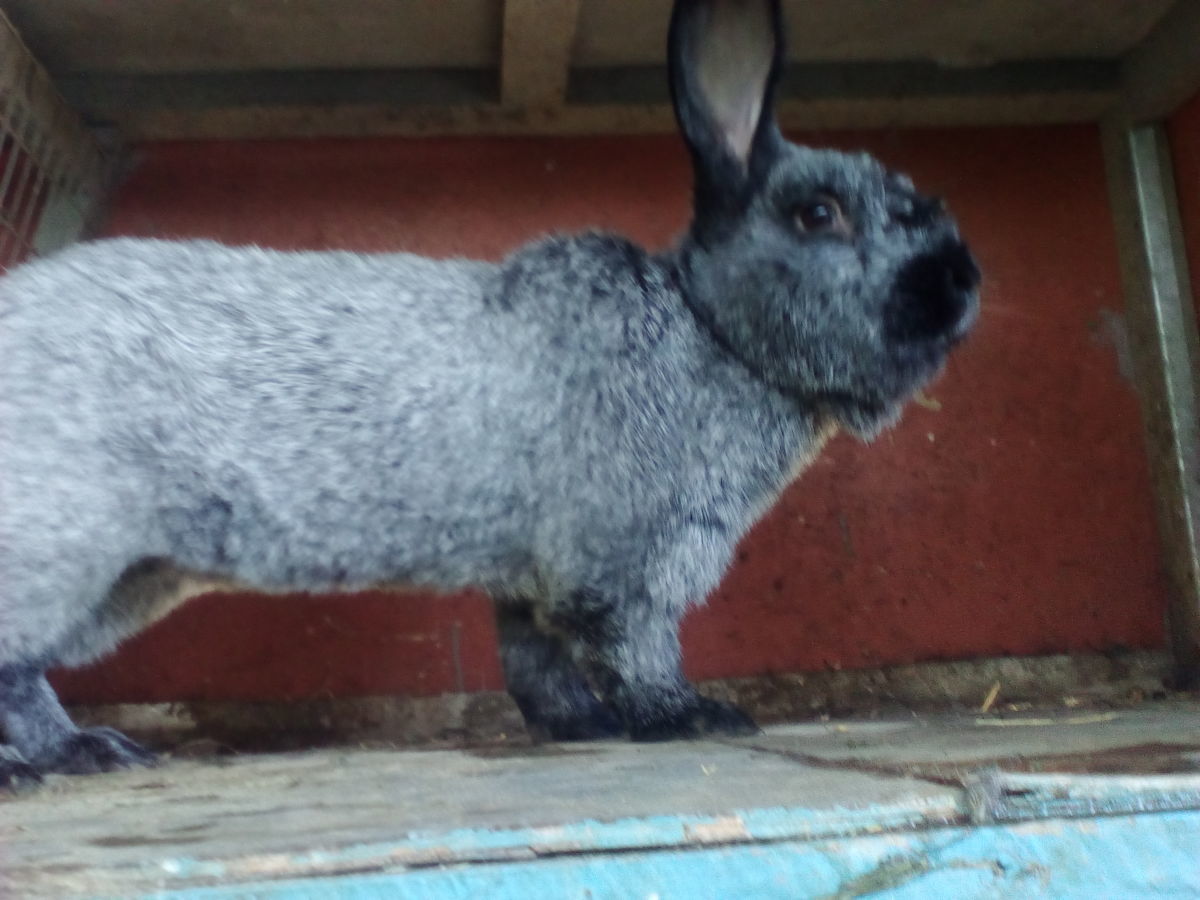
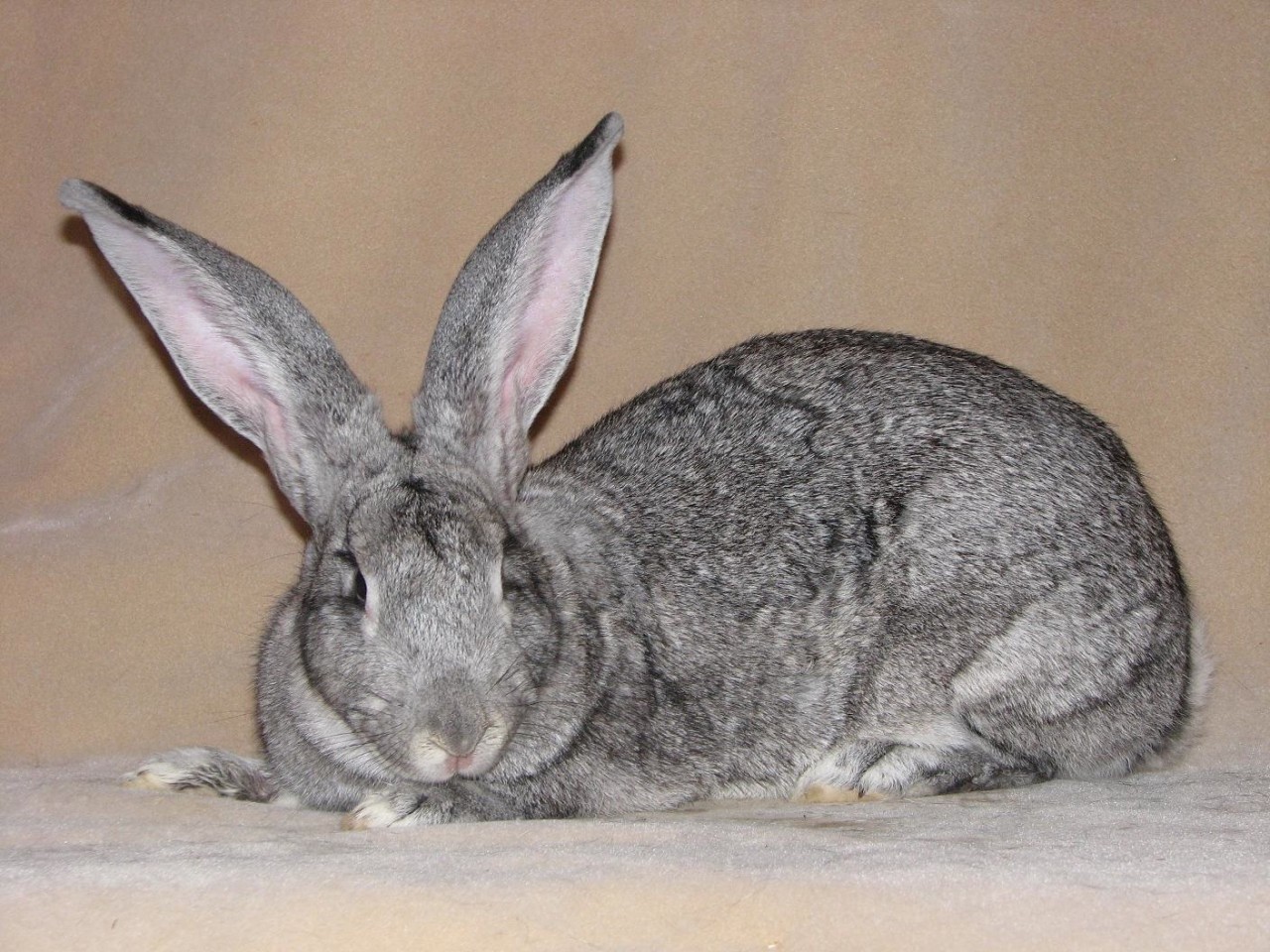


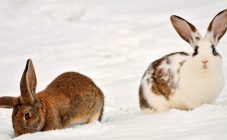
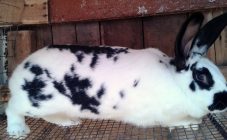
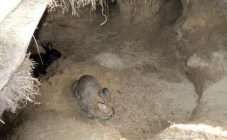
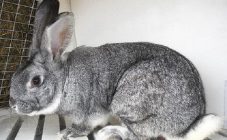
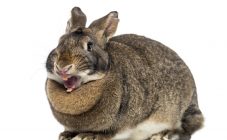
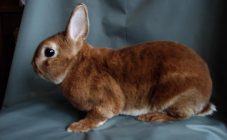







Silver rabbits are distinguished by a specific color of the fur coat, for which they received this name. Often, a breed line with a silvery sheen of wool is called Soviet, Russian, Poltava and European silver, because it has different places of breeding, but at the same time it fits into a single standard.